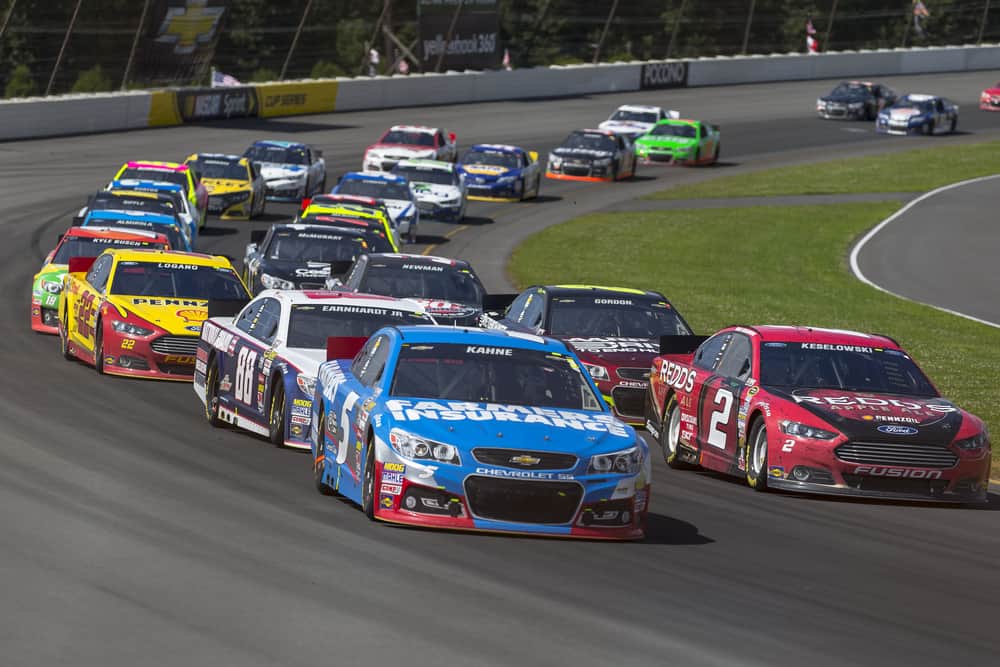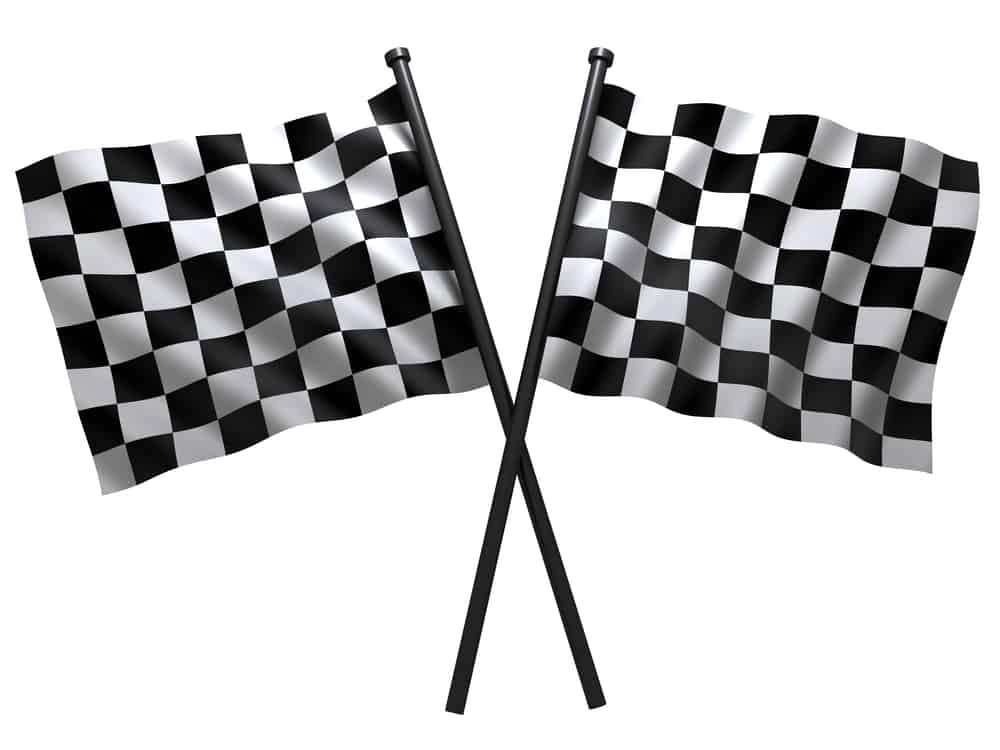It seems one common trend in sports and entertainment has been to try and make traditional live spectator sports better adapted to a digital audience. NASCAR, known for its trackside excitement, has not remained unaffected by this trend and broke up the 3+ hour single races into stages.
The number and distance of stags per race vary, but the resulting opinions on stage racing have been contentious. Some love it, some hate it, but all agree stages are here to stay.
Key Points:
- NASCAR introduced stage racing in 2017 as a way to adapt its traditional long-duration races to a larger digital audience.
- Stages consist of dividing the race into smaller segments, allowing for commercial breaks and creating more suspense and action for the audience.
- The adoption of stages in NASCAR races has generated mixed reactions, with some drivers and fans finding it a positive change while others do not.
Stages break the race up and give drivers new ways to strategize using pitstops and other racing necessities to gain more points and do better in each stage. Fans get more action, and televised events fit commercials in better than interrupting green flag racing. But some drivers say it makes superspeedways even more dangerous; let’s look at why NASCAR started stage racing and what the stage racing format is.
Why Were Stages Introduced to NASCAR?
Introduced in 2017, NASCAR stages were considered a needed change to the long-standing single-stage race event that the sport was known for. Instead of a long 100 or more lap race that requires endurance and only slows down for yellow flag laps and or caution flags, NASCAR decided to add 2 more stages to each race.
These stages act as 2 mini-races and one half-duration race instead of one high-mileage event. The reasons NASCAR implemented stage racing is myriad, as outlined in the info that follows.
As NASCAR viewership moves to a larger digital spectatorship when compared to trackside fans, the race format has needed to adapt as well. The main reason is there are no commercial breaks at live race events that can interfere with active racing moments. Although there are caution laps and times when racing is under a yellow flag, it can be difficult to time commercials perfectly and still give clients the required airtime.
Missing an amazing pass or crash in NASCAR due to a dragging ad is just as upsetting as not seeing a touchdown pass in football for the same reasons. While it doesn’t happen often, once is enough to piss off a casual fan. To ensure ad space buyers and fans of fixed commercial spots that guarantee interruption-free green flag racing.
This allows for planned breaks around the middle portions of the race which, while generally not as eventful as the start or finish of the race, can have moments that fans don’t like missing. Now they can make banging snacks and still follow their teams perfectly.
Stages help the most in preventing breakaway leaders in the first few laps of the race. Often a couple of racers can gain an intimidating lead that, unless crashes or car trouble occurs, will be maintained all three hours. Adding stages breaks up these types of leads and brings the audience’s attention back to the field every time the next stage of green-flag racing starts.
Stages break the 3-hour single race into 3 mini races, each with its own points and race winners, while helping to keep racers more bunched together during the middle of the race duration. This creates more drama and crashes while preventing breakaway victories.
The racers in the lead change more frequently, which makes the races and, therefore, the season closer in points and more suspenseful for fans. Often winners of stages and winners of the overall race are not the same, which also creates more action for sports betting, a very lucrative attraction NASCAR offers.
What Does a Stage Mean in NASCAR?
A stage is a division of the total race duration into usually three or occasionally four parts. The total number of laps in the race remains mostly unchanged but how races progress through these laps changes drastically. NASCAR, traditionally an endurance sport, relies on racers staying focused and alive for 3+ hours while sitting in a 140-degree F cockpit and hurtling along a trick at 200 MPH.
Stages change this by turning the single-race competition into 2 mini races and a full race that is half the duration of the total initial race. Drivers have an opportunity to accrue points in the regular season for qualifying in the championship competition.
How Do NASCAR Stages Work?
All Cup races have stages now, and every Cup race has at least 3 stages. (Coca-Cola 600 at Charlotte, which has an extra stage) These stages are not equal in length in miles and are divided based on the total length of the track and the mile goal of the event. The length of stages at Phoenix Raceway will be different than the stage lengths at other major series races like Daytona.
Generally, the first two stages are a quarter of the total race distance each, and the third stage is the remaining half, although that exact split is usually not that easy per existing track lengths. Sometimes stages work out as a 40/60 split, with 30% each for the first and second stages and the remaining 40% representing the final and longest stage.
Each of the stages starts and ends with a checked green/white flag, not the traditional end of the race checkerboard. Only the final stage of the race ends with the traditional checkered flag signaling not just the end of the 3rd stage but also the finale of the entire event. The crew chief and pit strategies teams need to incorporate stage endings into their race plans, and with stage structures, stage wins can matter as much as race wins for the championship competition.
Pros and Cons of Stage Racing
While there are plenty of logical and lucrative reasons to implement seasons of stage racing, not everyone is completely sold on it. The split racing format drastically affects the long-winded races and extreme endurance required in NASCAR’s traditional races. Die-hard track-attending fans are not happy with stage racing implementation since they don’t benefit from the onscreen advantages television spectators gain.
Proponents of the changes agree that it is nice that 1st place-driver, 2nd-place driver, and 3rd-place driver, as well as the following several, get some points on a 10-1 scale. The stage points drivers win can add more energy and excitement to races that used to only have one race winner per event.
Since the winners of stages are not necessarily the same victors as the one that completes the 600-mile race first, more fans get to see their favorite drivers win the race stages.
More advantages and drawbacks are below:
| Advantages | Disadvantages |
| More excitement for fans | Fresh tires after a stage sprint |
| Better for Commerical Scedules | Stage race format changes |
| More Points for Drivers | Gimmicky |
| More Passing and Crashing Mid-race | More dangerous for drivers |
Benefits
Typically only the winner of the racing venues gets playoff points and is the singular winner of the event. Caution periods and pitstops were the only breaks teams could count on from the rigors of the endurance race, and teams had to strategize accordingly. Now more rewards are given more frequently to racers at each stage, and points and stage endings replace multiple cautions per race techniques.
The new structure seems to be bringing more fans who like to see 150-mile races and then an additional race after these miniature races that is about twice the distance. The shorter portions of races create different race day strategies that tend to make for a more explosive and action-packed race. The stages add playoff benefits and a new point system that encourages racers to push hard like they would during qualifying races and other big events.
A racer that gets an early start will most likely not be ahead the entire race as race conditions change and the race stops and starts at least twice more. During the scheduled stage breaks, it is much easier for NASCAR to sell commercial space for official races, which helps with televised broadcasts. The breaks in the middle of races also allow for food runs and snack breaks without any risk of missing exciting green-flag racing.
Drawbacks
NASCAR has had a set term of race format for almost 100 years, and the premise of stage racing greatly affects established team strategies. What was previously compared to the endurance required of top athletes and marathon runners has been effectively halved, making it far less impressive when a racer flies across the finish as the checkered flag flies. Some would say this change ruins the racing experience.
Race stages also break up speed top-speed races that push cars to their limits for 100s of laps. When the mid-point of the race is stopped for a stage change, instead of being the highest speed passing portion, some fans may be a little put-off. Stages also replace pit stops and give drivers a break they would never have been able to take during the old races.
Despite the fact that NASCAR prioritizes driver safety in some cases, on some superspeedways, things can actually become more dangerous. Restrictor-plate races have been found to cause bunching up of racers which leaves less time to react to race obstacles.
Add to this stopping mid-way, and the crashes and bumps are sure to increase. While this is nice for fans that like a little of this kind of action, it is contrary to the intended goal of keeping drivers from crashing through NASCAR official policies.
What Are Stage Points In Races?
As winners pass the finished line to the green checkered flag that signals the end of the first two stages, the leading 10 drivers will be awarded stage points. These points are different from playoff points and help with qualifying and other track position reward in future races. The driver that passes the finish line first gets 10 stage points, while the 10th-place driver only gets 1 point. Drivers in position 11 onward are awarded no points for the stage.
Playoff points, typically coveted and only available when a racer finishes the full race, are available at the ends of stages. These points, different from the previous stage points, accumulate for a playoff-style race where each stage winner gets one playoff point.
The final race wins are worth 5 points for the playoff, so a driver that wins both stages and the overall race can leave with 67 playoff points. These points add up to positions and advantages in playoff races and continue to accumulate through the first stages of the championship race.
At the end of each race stage, points and playoff points are tallied and awarded to the winning drivers. In the area of fantasy sports leagues and sports betting, these points offer ways to create more action and build a rooster of winning racers. These changes are a far cry from the original spirit of NASCAR races but are working to bring in a younger audience base and provide better value to sponsors. Regardless, love them or hate them, NASCAR stage races are here to stay.



